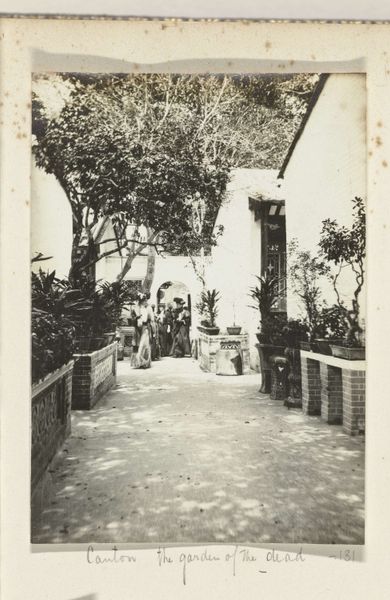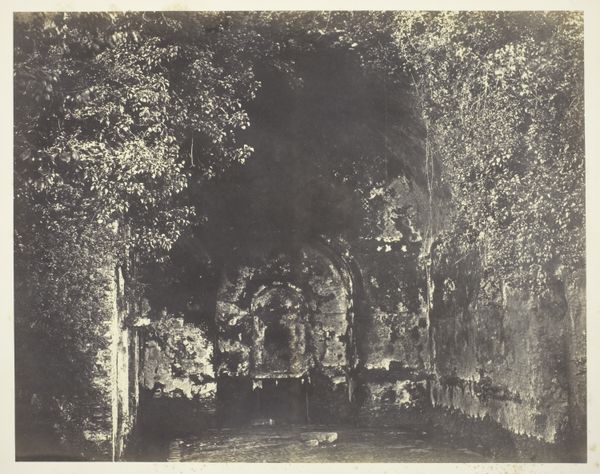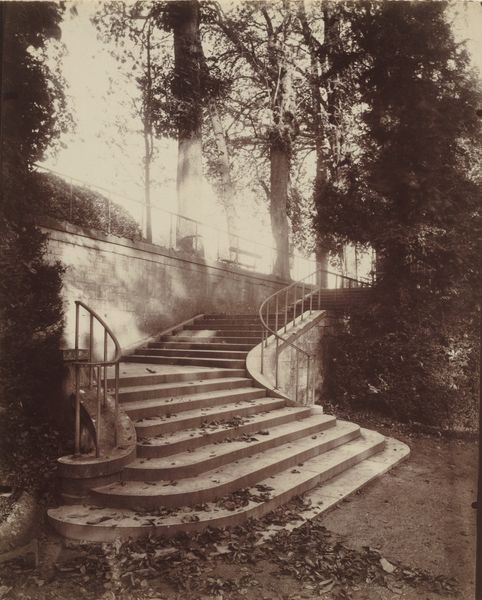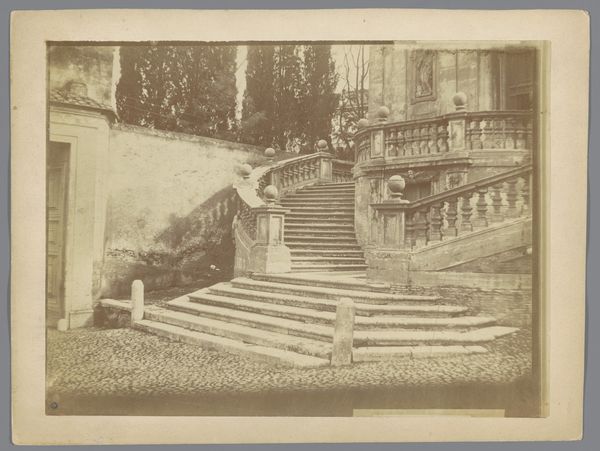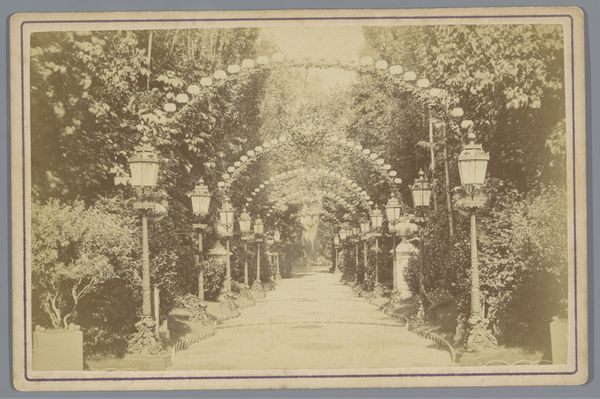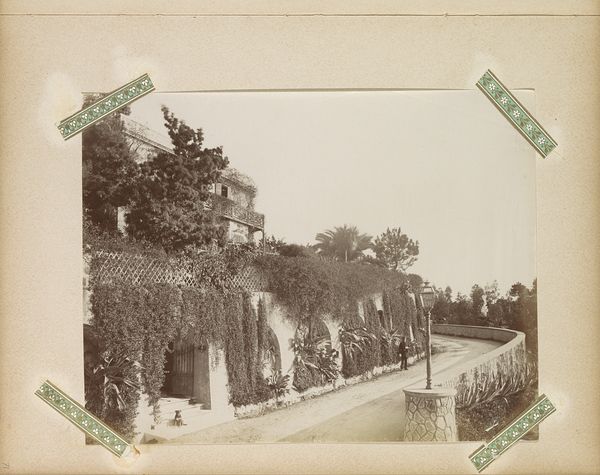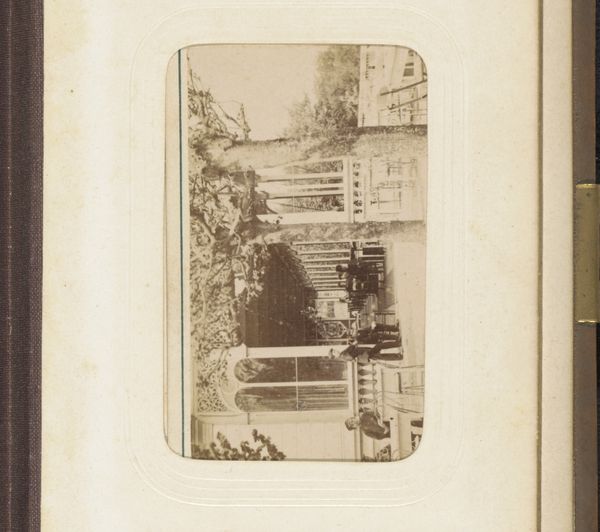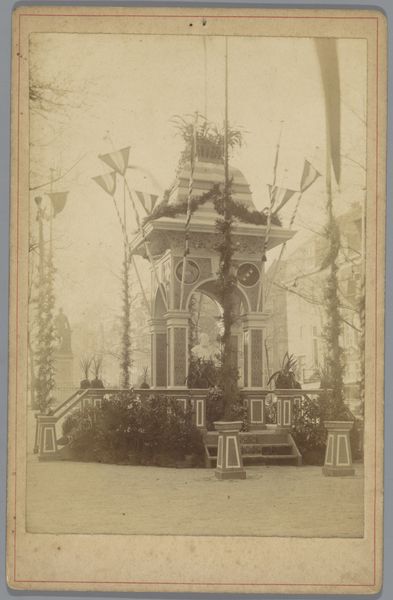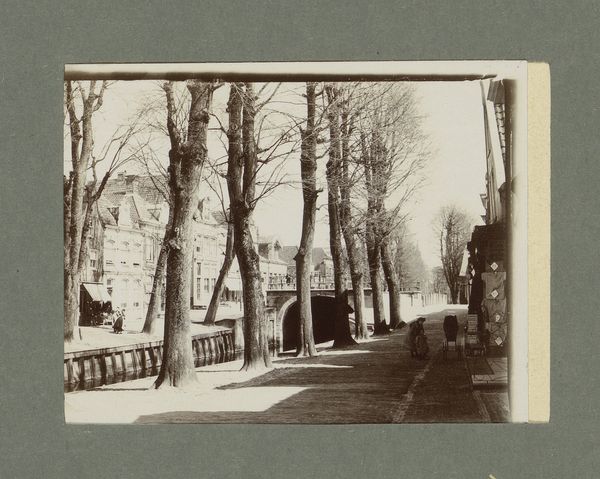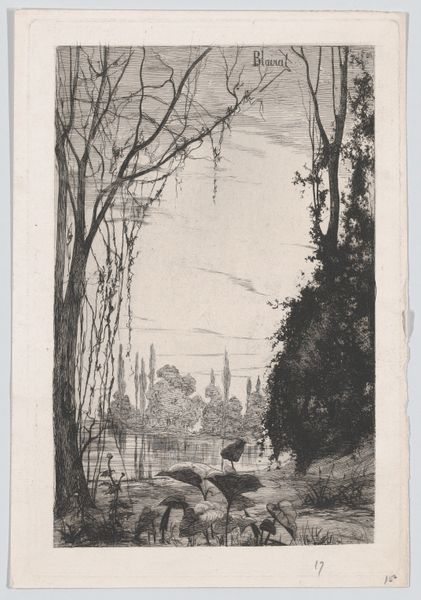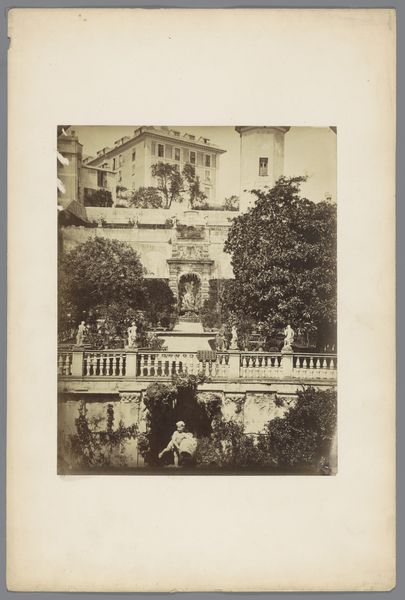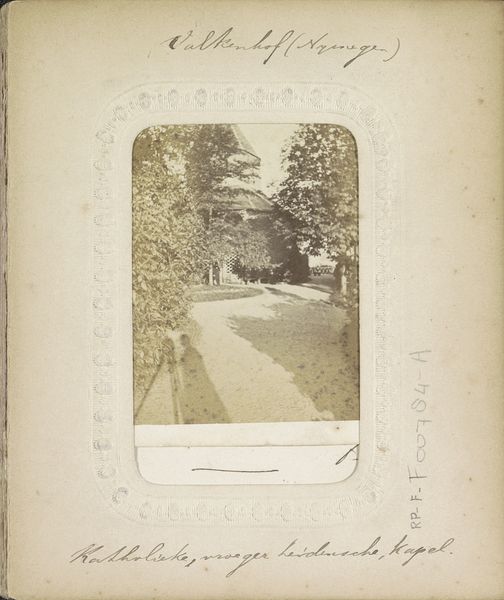![[Stairs] by Giacomo Caneva](/_next/image?url=https%3A%2F%2Fd2w8kbdekdi1gv.cloudfront.net%2FeyJidWNrZXQiOiAiYXJ0ZXJhLWltYWdlcy1idWNrZXQiLCAia2V5IjogImFydHdvcmtzLzc5MzczNmMxLTJiOTktNGIxMS1hZjg4LTVkY2U3ZmViMzBkNy83OTM3MzZjMS0yYjk5LTRiMTEtYWY4OC01ZGNlN2ZlYjMwZDdfZnVsbC5qcGciLCAiZWRpdHMiOiB7InJlc2l6ZSI6IHsid2lkdGgiOiAxOTIwLCAiaGVpZ2h0IjogMTkyMCwgImZpdCI6ICJpbnNpZGUifX19&w=3840&q=75)
photography, gelatin-silver-print
#
landscape
#
classical-realism
#
photography
#
gelatin-silver-print
#
academic-art
Dimensions: 10 x 8 1/8
Copyright: Public Domain
Curator: This photograph, simply titled “[Stairs],” was captured by Giacomo Caneva sometime in the 1850s, rendered using the gelatin-silver process. It resides now at the Metropolitan Museum of Art. Editor: My first thought? It’s beautifully melancholic. That sepia tone washes over everything, giving it a feeling of a forgotten memory, or perhaps a scene from a dream I can't quite grasp. It invites you closer but simultaneously creates an almost untouchable distance. Curator: Absolutely. Caneva's photograph really encapsulates the artistic trends that leaned into idealized, almost theatrical depictions of historical subjects. Think about how it stages these classical busts alongside lush vegetation, creating an appealing classical-realist scene for a growing art audience eager to engage with culture. Editor: The staircase is just majestic! Almost beckoning towards a destiny unknown, it pulls my gaze upward. Though slightly underexposed in areas, this adds more than detracts by contributing a subtle eeriness; as if whatever secrets may lay higher remain slightly shrouded within darkness. Curator: And don't forget the context here; photography was still fairly nascent. Prints such as these were important means to communicate a certain ideal of European cultural heritage in a very different medium. Museums began actively collecting photographs like these from around the mid-19th century as an attempt to expand their collections and public outreach. Editor: True. It really illustrates that photography's role back then wasn't always what it's considered nowadays. I mean looking through it I ponder upon concepts much deeper then surface level observation; time shifts like sand swirling downward. The muted yet rich tones paint shadows and emphasize certain structures within some half-remembered temple ruins. So many things remain almost intentionally ambiguous to the casual passerby while subtly intriguing others enough to ask bigger questions or search further. Curator: Definitely food for thought about the public perception of both the sites represented, and the medium itself! It demonstrates that every visual technology embodies the ideological currents and desires that drive them. Editor: What remains, ultimately, feels incredibly eternal but still deeply intimate all wrapped in a still shot. It's quite special when something can make that come alive.
Comments
No comments
Be the first to comment and join the conversation on the ultimate creative platform.
